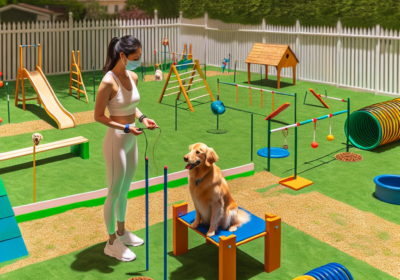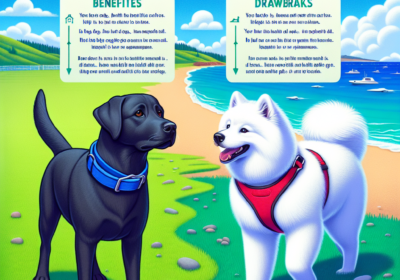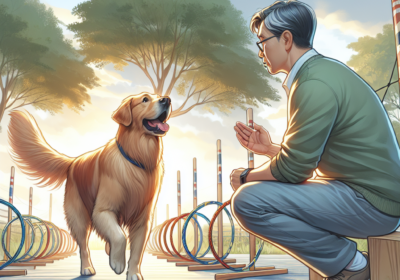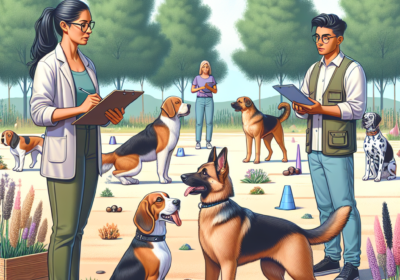How Can I Help My Dog in the Summer?
The summertime is a dangerous time for dogs, and they may be susceptible to heatstroke. Several steps can be taken to protect your dog from the heat. First, you should keep your dog in a cool place to prevent dehydration and heat stroke. Alternatively, you can immerse your dog in cool water.
Another thing you can do is provide your dog with a cooling mat. Cooling mats can be made out of a damp towel and can be refreshed by pouring cold water on them when needed. In addition, you can brush your dog’s coat regularly to remove dead hair and keep the coat cool. This is especially important for dogs that are going through a summer moult or have a heavy coat.
Another great way to keep your dog cool is to make sure your dog gets plenty of water and treats. During the summer, a dog’s body temperature can rise quickly, so it is important to limit its activities during the hottest times of the day. You can also try letting your dog play in the water when the weather is not too hot. But make sure you supervise the water activities!
If you have a yard or patio, try to set up a canvas canopy or shade tent for your dog. Shade tents are readily available at home and garden stores. You can also buy cooling beds for your dogs. Cooling beds are great for older dogs with arthritis, as they can help lower their body temperature. In addition to these, you can also provide your dog with cooling vests to keep them cool. Lastly, make sure to limit your dog’s exercise during the summer, and choose cooler days to take him for walks.
Another way to help your dog stay cool is to provide fresh, icy water. Dogs need water breaks frequently, and without it they can become dehydrated. It is important to place water bowls around your yard or house, as dogs need to drink lots of water, especially if the temperature is high.
It is also vital to give your dog plenty of rest in the heat. Even if the temperature is not very high, dogs may become grumpy and will feel exhausted. You should also make sure your dog has ample space to sit in a shady spot.
Overweight or obese dogs are at higher risk of heatstroke. They struggle to breathe in hot weather, which makes heat stroke a bigger issue for them. If you notice any of these problems, consult your veterinarian and ask for advice. He or she will be able to guide you on what to feed your dog and what not.
Dogs can also get sunburnt, so they must be kept in cool places. If they have to walk long distances, make sure they stay in the shade or under a tree. In addition to trees, shrubs, and gazebos are other options to keep your dog cool. You can also provide iced treats as a way to encourage them to drink.
Another option for keeping your dog cool is to let him swim. You can buy a plastic kiddie pool for under $15. Make sure that you supervise him while he swims to avoid injury.
Don’t leave your dog in the car! You don’t want him to get heatstroke. If your dog is in danger of heatstroke, the first thing to do is to call your veterinarian right away. You should also keep a digital thermometer with you.
Another option is to put a cooling collar or bandana on your dog.
What Cools Down Dogs Instead of Sweating?
Dogs have a special way of cooling down. Instead of sweating, they secrete a liquid that cools their bodies. This liquid is produced from the areas of their body that lack hair follicles. This can be seen in the wet nose or the moist paw prints on your hardwood floors. The glands that produce the fluid are essential for cooling the dog down.
The primary method for cooling down dogs is panting, which allows moisture on the tongue to evaporate and helps regulate the body’s temperature.
Overheating dogs can lead to fatal consequences. When the core body temperature of a dog reaches 43 degrees Celsius, blood flow is diverted away from vital organs, which can lead to organ failure. Moreover, extreme heat puts a strain on the heart of a dog, which can lead to irregular heartbeats. To prevent this from happening, dog owners must know what causes dogs to become overheated and take steps to cool them down.
Signs of Overheating in Dogs
If you notice your dog overheating, seek immediate help from a vet. Dogs with overheating symptoms may lose consciousness, have bloody diarrhea, or disorientation. In extreme cases, overheating may also lead to neurological distress and collapse. The first step in treating an overheating dog is to provide the dog with cool water, which can be achieved with hoses, bowls, or wet towels. You can also move the dog to an air-conditioned room or use fans to cool the ground.
A dog may also show symptoms of dehydration, such as a dry nose and thick saliva. It may also appear dull or inactive, or lose its balance. The most obvious warning sign of overheating in a dog is labored breathing, which can be accompanied by other signs.
When a dog is dehydrated or overheating, the gums and urine may be a reddish color. The dog may also exhibit unusual muscle tremors. A dog with a hot temperature may also have difficulty standing or walking. It may even have diarrhoea and vomiting.
Article suggested by Paws, Claws & Tails







![The Dog Podcast Uncovers Startling Truths About What We Feed Our Dogs [Press Release]](https://yourhomeandgardenhub.com.au/wp-content/uploads/2024/08/dog-bowl-400x280.webp)


